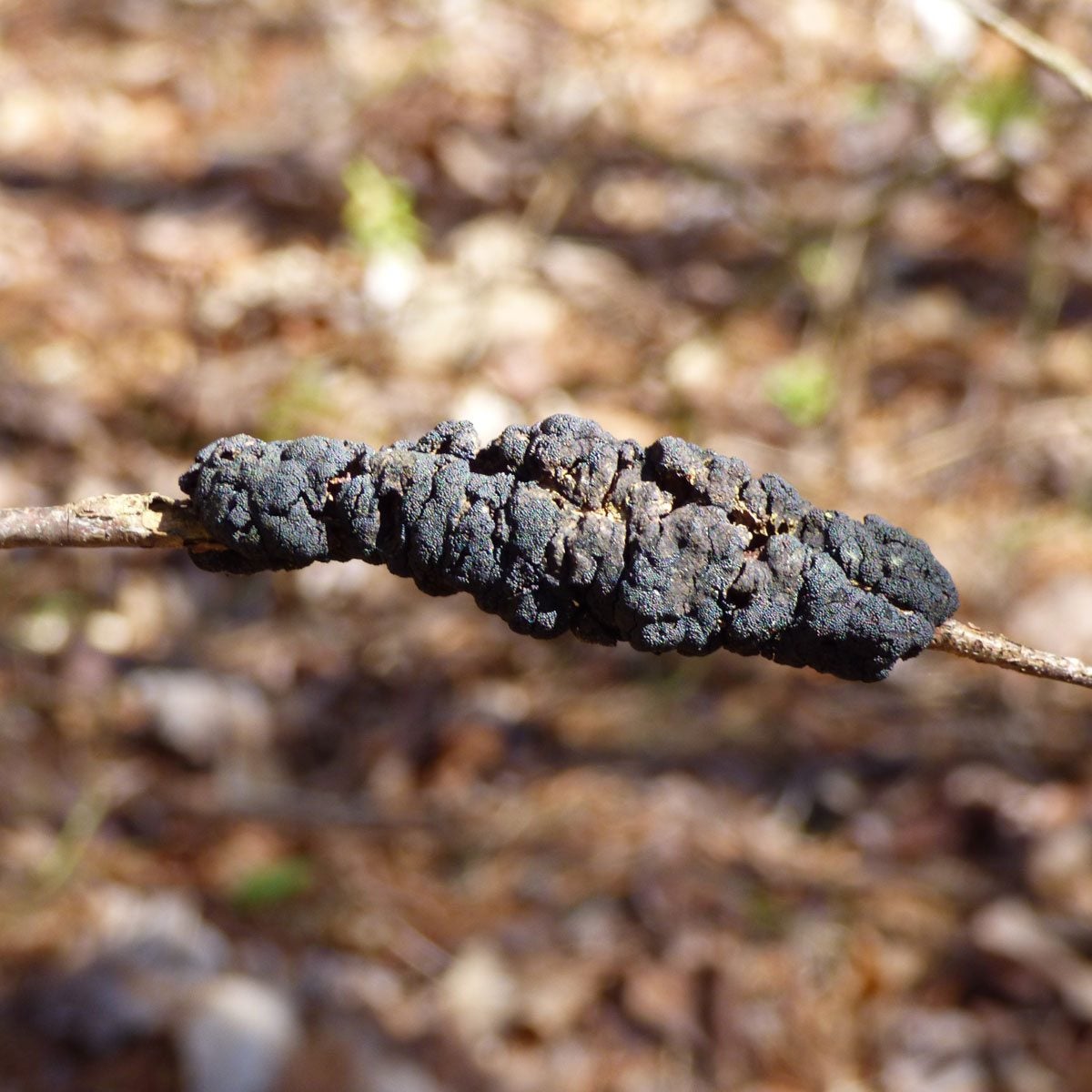Cherry Black Knot Disease: Treating Cherry Trees With Black Knot


If you’ve spent much time out in woods, especially around wild cherry trees, you have most likely noticed irregular, odd looking growths or galls on tree branches or trunks. Trees in the Prunus family, such as cherry or plum, grow wildly throughout North America and other countries and are highly susceptible to a serious fall producing fungal disease known as cherry black knot disease or just black knot. Read on for more cherry black knot information.
About Cherry Black Knot Disease
Black knot of cherry trees is a fungal disease caused by the pathogen Apiosporina morbosa. Fungal spores are spread amongst trees and shrubs in the Prunus family by spores that travel on wind and rain. When conditions are damp and humid, spores settle on young plant tissues of the current year’s growth and infect the plant, causing galls to form. Old wood is not infected; however, the disease may go unnoticed for a couple years because the initial formation of galls is slow and inconspicuous. Cherry black knot is most common in wild Prunus species, but it can also infect ornamental and edible landscape cherry trees. When new growth is infected, usually in spring or early summer, small brown galls begin to form on branches near a leaf node or fruit spur. As the galls grow, they become larger, darker, and harder. Eventually, the galls crack open and become covered with velvety, olive-green fungal spores which will spread the disease to other plants or other parts of the same plant. Cherry black knot disease is not a systemic disease, meaning it only infects certain parts of the plant, not the entire plant. After releasing its spores, the galls turn black and crust over. The fungus then overwinters inside the gall. These galls will continue to grow and release spores year after year if not treated. As the galls enlarge, they may girdle cherry branches, causing leaf drop and branch dieback. Sometimes galls may form on tree trunks as well.
Treating Cherry Trees with Black Knot
Fungicide treatments of black knot of cherry trees is only effective in preventing the spread of the disease. It is important to always read and follow fungicide labels thoroughly. Studies have shown that fungicides containing captan, lime sulfur, chlorothalonil, or thiophanate-methyl are effective in preventing new plant growth from contracting cherry black knot. They will not, however, cure already present infections and galls. Preventative fungicides should be applied to new growth in spring to early summer. It may also be wise to avoid planting ornamental or edible cherries near a location that contains many wild Prunus species. Although fungicides cannot treat the galls of cherry black knot disease, these galls can be removed by pruning and cutting. This should be done in winter when the tree is dormant. When cutting out cherry black knot galls on branches, the entire branch may need to be cut off. If you can remove the gall without cutting off the whole branch, cut an extra 1 to 4 inches (2.5-10 cm.) around the gall to ensure that you get all infected tissues. Galls should be immediately destroyed by fire after removal. Only certified arborists should attempt to remove large galls growing on the trunks of cherry trees.
Sign up for the Gardening Know How newsletter today and receive a free copy of our e-book "How to Grow Delicious Tomatoes".

Darcy is a former contributor to Gardening Know How. She is a professional landscape designer and gardening writer with experience in plant sales. An avid gardener, Darcy has a passion for sharing practical tips to help others grow.